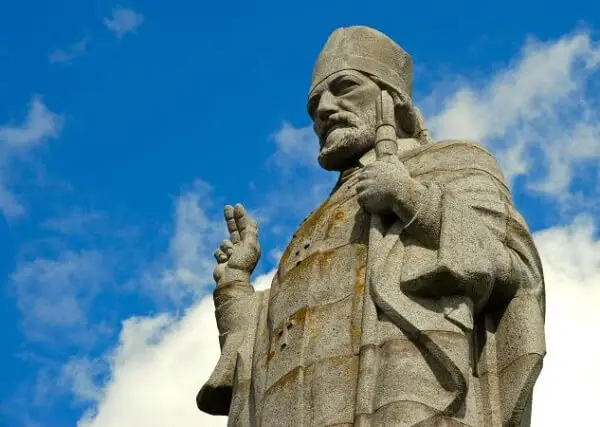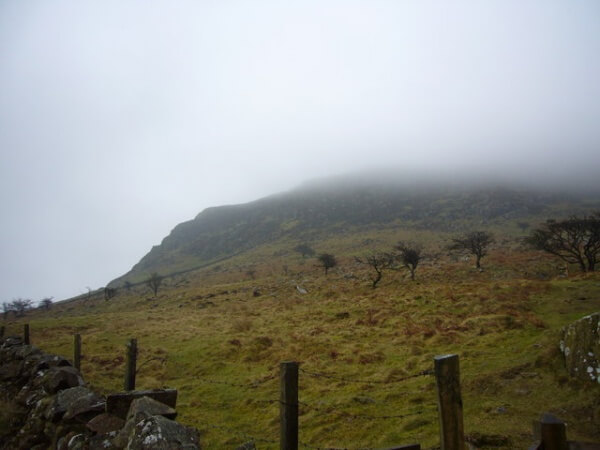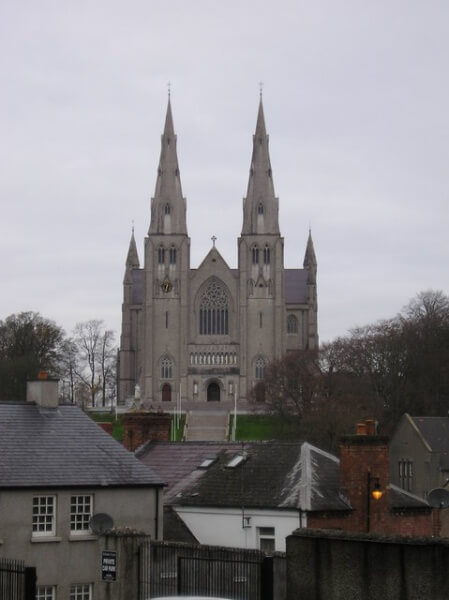
Saint Patrick: he is a figure of legend and myth as much as he is a holy man of religious belief and story. Patrick is a symbol of Irish identity too.
Much of what is known about Saint Patrick, the man himself, is lost in the mists of time, as he lived more than fifteen centuries ago in a time and place that believed more in oral tradition, the passing on of stories told and songs sung, rather than books written down. From Japan to Alaska to Mexico to Manhattan, though, you will find churches, schools, and people named after this patron saint of Ireland.
One thing that has remained through the legends, scholarly investigations, tales of faith and miracle across the centuries is handed down knowledge of where Patrick lived and walked and carried out his ministry. You can make a driving tour of this part of Northern Ireland from Antrim to Down to Armagh, and experience museums and churches dedicated to the saint as well as see hills and valleys, mountains and streams and roads, which might be the very places Patrick traveled through in times past. Some of these places have been built and rebuilt across time.
The physical landscape remains, though, in many places framing views and revealing the changing faces of the land through the seasons, the sunrises and sunsets, in much the way, one has to think, that Saint Patrick saw these things so long ago.
County Down and County Armagh, in the northeastern part of the island of Ireland, have many places of interest to those who would see the landscapes Patrick saw.
You might begin your journey, especially if you have a taste for the remote, in County Antrim though, up north of Belfast near Ballymena. Here you will find the Slemish mountains. It is here that Patrick, captured as a teenager from his home in Britain, was made a slave and worked as shepherd.

It was during his time as a lonely shepherd on the slopes of the Slemish mountains that he turned to God and began to commit most strongly to his faith. It was also during the six or so years of his captivity here that he learned the ways and culture of the people of Ireland, their stories, and their language too.
Eventually, Patrick escaped, and went, depending on which story you follow, to Wales, France, or Scotland, where he became a priest, and where after a time he had a dream in which an angel was calling him back to Ireland. He went.
Much of his ministry took place in the northeast part of the country: one of the earliest places he stayed was at Saul — the word saul means barn in Irish — in a barn provided him by a local ruler.
As he traveled about preaching and encouraging conversion and baptizing, it is said that he gained a reputation as a powerful preacher.
Did he confront druids? Hard to know.
Did he drive snakes out of Ireland? No, at least not actual snakes, as Ireland has never had any. Serpents in the form of evil, though, may well be what that story is meant to convey.
Did he teach about the Trinity by using a shamrock? That’s likely: in his time in Slemish he had learned of the Irish fondness for stories and sayings and worship framed in threes, so it would have been both wise and respectful for Patrick to draw on the image of the shamrock.
Several things you might look for on your driving tour following Saint Patrick:
The two cathedrals at Armagh, and the site of Navan fort nearby. It’s thought that Patrick may have chosen a site near the pre Christian center of power at Navan to create a center for his then new faith.

The place where his church is said to have been that of the present day Church of Ireland cathedral; the Roman Catholic cathedral is also named after him. Both are seats of the archbishops of their respective churches. Construction of the Catholic cathedral was begun on Saint Patrick’s Day in 1840; because of the Great Hunger it was not consecrated until 1904.

Modern day Newry, a crossroads of travel, commerce, and political boundaries today and in times past. Patrick planted a yew tree at the head of Carlingford lough. The city, which has a fine museum with a thoughtful exhibit on what makes a border (it is right on the border between Northern Ireland and the Republic) takes its name from the Irish words for yew tree at the head of the strand, in honor of that tree Patrick is said to have planted.
Another place you will certainly want to include in your Patrick travels is Downpatrick, just a short drive from Newry. The city is the home of the Saint Patrick Centre, which is the only museum in the world dedicated to telling Patrick’s story. There you will find a multimedia exhibition tracing aspects of Patrick’s life and the world he knew and have the opportunity to view an IMAX film which will tell you about many of the places all across Ireland associated with the saint.

You will also want to visit the nearby Down Cathedral, traditionally considered the burial place of Saint Patrick. It is also said that the remains of Ireland’s two other primary saints, Brigid and Columcille, are buried here as well. There are in any case records of monasteries on the site going back to the sixth and seventh century. You may also want to visit Saint Patrick’s Church in Downpatrick, which is the site of a nineteenth century shrine to the saint with mosaics telling of his life.
There are other places in Down, Armagh, and Antrim where Saint Patrick must have walked. There are other places all across the island, as well: Croagh Patrick, across the island to the west in Mayo, long a pilgrimage site; Lough Dearg, another site of pilgrimage in Donegal; Saint Patrick’s (possibly hidden) Holy Well in Dublin; the River Slaney in Wexford, where Patrick may have escaped from and returned to Ireland.

You could in fact extend your tour of Ireland quite a bit by following Patrick’s footsteps, or you could focus on one or two of these museums or churches or places of history. However you go about it, though, take the time to look at the colors of the landscape and to listen, to the music and to the silence. That is what Patrick himself did, and how you will come to understand him.

Speaking of listening to the landscape and the music, here is a soundtrack for your journey: Ireland in Music: Four Voices.
Photographs courtesy of and copyright by
Albert Bridge Saint Patrick statue near Saul
Simon Scurr Slemish mountains
Kenneth Allen Navan
Chris Andrews Saint Patrick’s Cathedral, Armagh (Roman Catholic)
The Saint Patrick Centre/ Down Cathedral
Brian Hodge River Slaney at dusk, County Wexford
Albert Bridge countryside near Saul, Northern Ireland
Consider subscribing to our stories through email, and connecting with us through your favorite social networks. Thank you.

I visited Croagh Patrick two years ago and got to experience the Saint Patrick’s path (http://bit.ly/1oXxBuR)! It was a wonderful experience. People came there for pilgrimage, and I loved hearing their stories.
What was the teaching about the Trinity by using a shamrock?
Basically, it was using the shamrock as a visual representation of the theology of three in one and one in three — how three leaves can be part of one plant, so the triune God can have three distinct aspects but still be one. There are several different legends about where, when, and to whom Saint Patrick used this analogy.